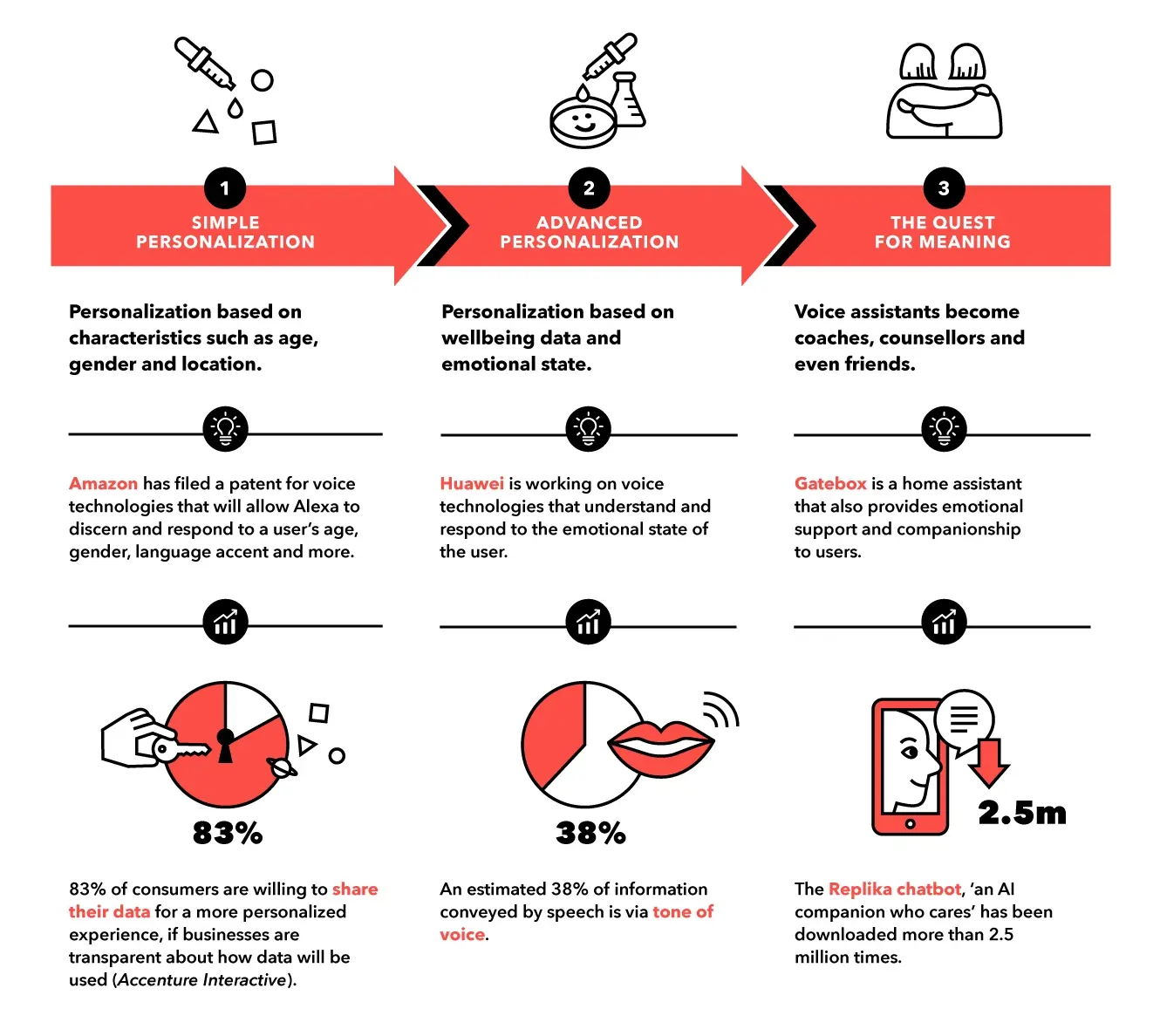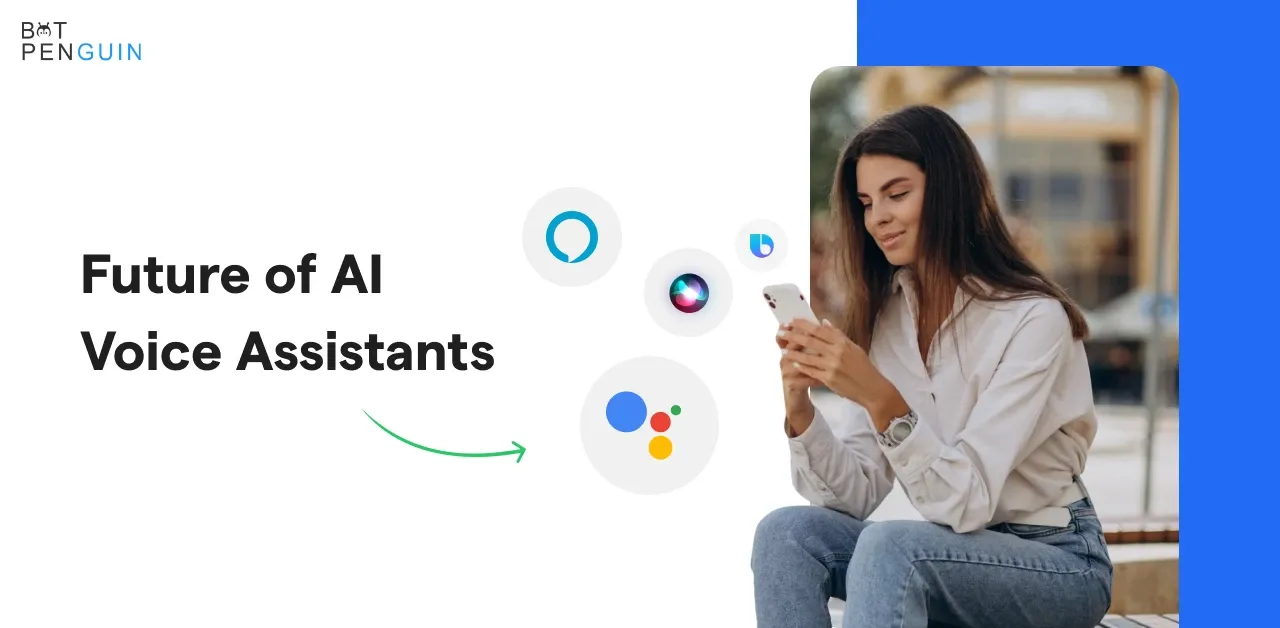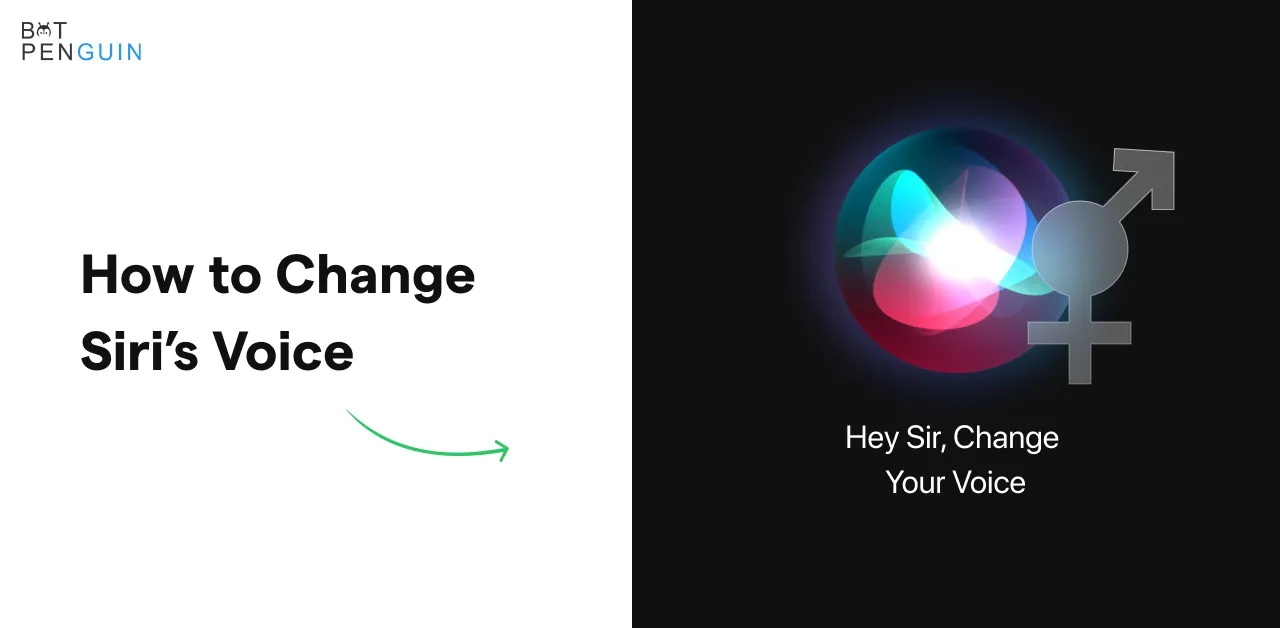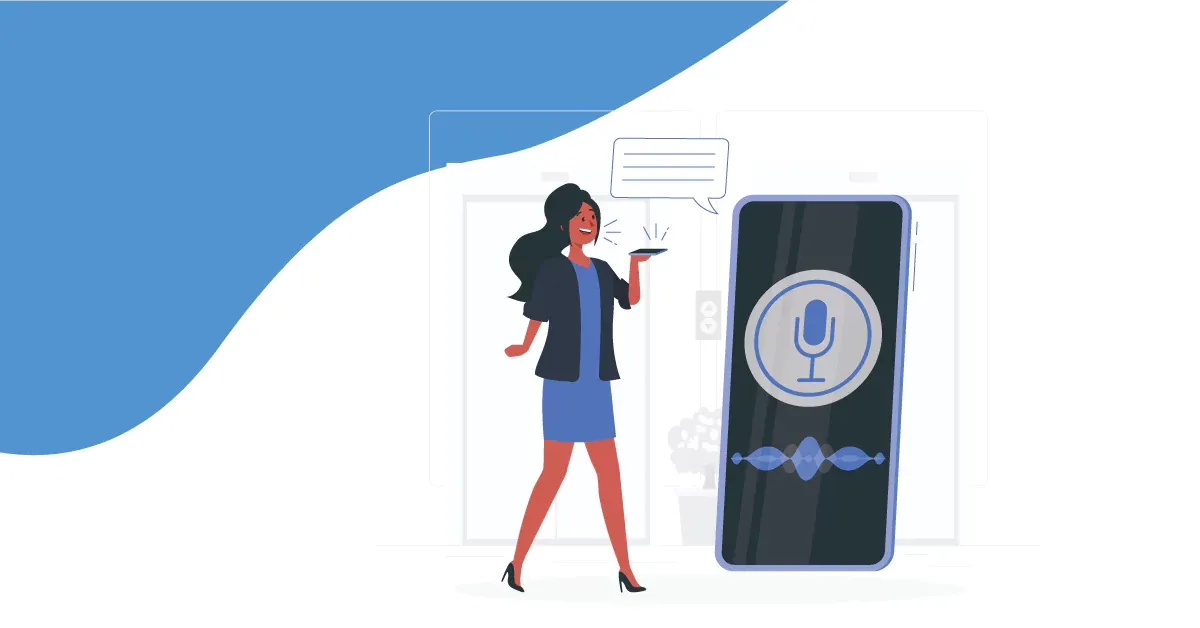Voice technology has come a long way since its humble beginnings, and it's now changing the way we interact with devices, access information, and communicate with each other.
In fact, according to a recent report by Juniper Research, over 8 billion voice assistants are expected to be in use by 2023, up from an estimated 2.5 billion in 2018. This rapid adoption is a testament to the growing importance of voice technology in our daily lives.
One of the driving forces behind this surge in popularity is the ability of voice technology to address pain points like accessibility, convenience, and efficiency.
With voice-activated devices, users can perform tasks and access information without lifting a finger, making it an indispensable tool for individuals with physical disabilities or those who crave a hands-free experience.
However, despite its numerous advantages, voice technology also faces challenges such as privacy concerns, language barriers, and the need for constant improvement in speech recognition and natural language understanding. As we continue to refine and enhance voice technology, it's crucial to address these issues and unlock its full potential.
In this blog post, we'll dive deep into the world of voice technology. Let's get started.
What is voice technology?
Voice technology refers to the systems and tools that enable computers and digital devices to understand, interpret, and respond to human voice recognition.
This technology allows users to interact with devices using their voice, making it a more natural and convenient method of communication compared to traditional input methods like typing or touchscreens.
At the core of voice technology is natural language processing (NLP), a field of artificial intelligence (AI) that focuses on the interaction between humans and computers using natural language, it encompasses voice recognition..
NLP enables voice technology systems for voice recognition, understanding its meaning, and generate appropriate responses.
This process typically involves several components, such as voice recognition, natural language understanding, and reader text-to-speech synthesis.
One of the most significant benefits of voice technology is its ability to create more accessible and inclusive digital experiences.
By enabling voice-based interactions, users with visual impairments or those who have difficulty using traditional input methods can engage with digital platforms more easily.
Additionally, voice technology allows for hands-free interactions, which can be particularly useful in situations where users are multitasking or unable to use their hands.
A well-known example of voice technology is the virtual assistant, such as Amazon's Alexa, Apple's Siri, or Google Assistant.
These AI-powered assistants can perform a wide range of tasks, from answering questions and providing information to controlling smart home devices and playing music.
The Key features of voice technology
Users can interact with these virtual assistants using their voice, making it easy and convenient to access information and complete tasks without the need for a screen or keyboard.
Voice recognition
Voice recognition is the backbone of voice technology. It enables devices to identify and understand spoken words, allowing users to communicate with their gadgets using natural language.
This feature makes interacting with technology more intuitive and user-friendly.
Natural Language Processing
Natural language processing (NLP) is the secret ingredient that helps voice technology understand not just what we say, but also the context and meaning behind our words.
NLP allows devices to grasp the nuances of human language, making communication with machines more seamless and efficient.
Artificial Intelligence
Artificial intelligence (AI) powers voice technology by enabling devices to learn from voice recognition-induced user interactions, adapt to different accents and languages, and continuously improve their understanding and responses.
AI is what makes voice assistants like Siri and Alexa smarter over time.

Voice Biometrics
Voice biometrics adds an extra layer of security to voice technology by using unique vocal characteristics to identify and authenticate users.
This feature ensures that only authorized individuals can access sensitive information or perform specific tasks using voice commands once the software completes voice recognition.
Text-to-Speech Synthesis
Text-to-speech synthesis is the process of converting written text into spoken words. This feature allows voice technology to provide audible responses, making it ideal for situations where visual output is not practical or accessible, such as while driving or for visually impaired users.
Multilingual Support
Voice technology has come a long way in terms of supporting multiple languages and dialects.
This feature enables users from diverse linguistic backgrounds to interact with devices using their native language, making voice technology more inclusive and accessible to a broader audience.
Integration with Other Technologies
One of the key strengths of voice technology is its ability to integrate with other technologies, such as smart home devices, mobile apps, and web services.
This integration allows users to control various aspects of their digital lives using voice commands, creating a more seamless and connected experience.
The Benefits of Voice Technology
There are many benefits of voice Tech, some of them are
Enhanced Accessibility
Voice chat can make digital platforms more accessible to users with visual impairments or those who have difficulty using traditional input methods, such as keyboards or touchscreens.
By enabling voice chat, these users can interact with websites, apps, and services more easily, creating a more inclusive digital experience with the help of voice recognition.
Hands-Free Convenience
Voice chats voice recognition allows users to engage in conversations and access information without the need to type or use their hands.
This hands-free convenience can be especially helpful in situations where users are multitasking, such as driving, cooking, or exercising, making it easier for them to stay connected and informed.
Faster Communication
Voice chat often enables faster communication compared to typing, as speaking is generally quicker than typing for most people.
This can lead to more efficient and productive conversations, allowing users to convey their thoughts and ideas more effectively and reducing the time spent on back-and-forth exchanges.
Natural and Intuitive Interactions
Voice chat provides a more natural and intuitive way for users to interact with digital platforms, as it closely resembles the way people communicate in real life with the help of voice recognition.
This can make the user experience more enjoyable and engaging, as it removes the barrier of typing and allows users to express themselves more freely.
Improved Engagement and User Experience
Integrating voice chat into digital platforms can lead to increased user engagement and improved user experience.
By offering a more interactive and dynamic communication method, users are more likely to stay on a platform, explore its features, and engage with its content.
This can ultimately lead to higher user satisfaction and voice recognition enables increased loyalty.
Multilingual Support
Voice chat can often provide multilingual support, allowing users to communicate in their preferred language.
This can help break down language barriers and create a more inclusive environment for users from diverse linguistic backgrounds. By offering voice recognition multilingual voice chat, platforms can cater to a broader audience and expand their reach globally.
Use Cases of voice technology
Voice Tech can be used in different ways such as-
Virtual Assistants
Virtual assistants like Siri, Alexa, and Google Assistant are some of the most popular applications of voice technology.
They make our lives easier by answering questions, setting reminders, sending messages, and performing countless other tasks, all through simple voice commands.
Smart Home Control
Voice technology voice recognition has revolutionized the way we interact with our homes.
From adjusting the thermostat to turning on the lights, voice commands allow us to control various smart home devices hands-free, making our living spaces more comfortable and convenient.
In-Car Assistance
In-car voice technology enables drivers to access information, entertainment, and voice recognition communication features without taking their hands off the wheel or eyes off the road.
From navigation and music playback to calling and messaging, voice commands help ensure a safer and more enjoyable driving experience.
Accessibility for People with Disabilities
Voice technology has been a game-changer for people with disabilities, particularly those with visual impairments or limited mobility.
By enabling hands-free and screen-free interactions, voice recognition voice technology allows users to access information, communicate, and control devices with ease.
Customer Service Automation
Businesses are increasingly using voice technology to automate customer service interactions.
Voice bots can handle routine inquiries, resolve issues, and even process transactions, reducing wait times and providing customers with a more efficient support experience.
Language Translation
Voice technology has made real-time language translation more accessible than ever.
With apps like Google Translate, users can speak into their devices and receive instant translations in their desired language, breaking down communication barriers and fostering global connections.
Voice-Activated Gaming
The gaming industry has also embraced voice technology, with some games incorporating voice commands as a means of control or interaction.
Voice-activated gaming offers a more immersive and engaging experience, allowing players to dive deeper into their virtual worlds.

How does Voice Chat make a difference in a business setting?
Voice chat in a business setting can significantly impact communication and collaboration. Let’s explore how:
Enhanced Communication
Voice chat with the help of voice recognition enables real-time conversations among team members, fostering collaboration and improving the flow of information.
This instant communication helps teams stay connected, especially in remote work environments, and ensures everyone is on the same page.
Reduced Miscommunication
Voice chat allows for a more nuanced exchange of ideas compared to written messages, as it conveys tone and emotion.
This voice recognition clarity reduces the risk of miscommunication, ensuring that team members understand each other's intentions and ideas more accurately.
Increased Productivity
Voice chat can streamline workflows by reducing the time spent typing out lengthy messages or waiting for email responses.
Quick voice recognition voice conversations can resolve issues or answer questions more efficiently, allowing team members to focus on their tasks and maintain productivity.
Building Team Relationships
Voice chat voice recognition provides a more personal touch to communication, helping team members build rapport and camaraderie.
This connection fosters a positive work environment, which can lead to increased job satisfaction and employee retention.
Multitasking Capabilities
Voice chat allows team members to multitask during conversations, freeing up time for other tasks.
For example, employees can discuss projects while referencing shared documents or working on their computers, maximizing efficiency and making the most of their time.
Global Collaboration
In businesses with international teams or clients, voice chat enables seamless communication across time zones and language barriers.
With real-time voice recognition language translation features, voice chat can help bridge the gap between team members, ensuring everyone is heard and understood.
Accessibility and Inclusivity
Voice chat can be an invaluable tool for individuals with disabilities, such as visual impairments or mobility limitations.
By providing an alternative to written communication, voice chat voice recognition ensures that all team members can participate in conversations and contribute to the workplace.
Cost Savings
Investing in voice chat technology can lead to cost savings for businesses. By reducing the need for in-person meetings and travel expenses, voice chat allows companies to allocate resources more effectively while still maintaining strong lines of communication.
Limitations of Voice Technology
Voice technology has made significant strides, but it still faces some limitations. Here are a few:
Background Noise Interference
One of the limitations of voice technology is its susceptibility to background noise interference. In noisy environments, voice recognition systems may struggle to accurately capture and interpret speech, leading to misunderstandings or incorrect responses.
This can hinder the effectiveness of voice recognition technology in certain situations, such as crowded public spaces or while driving with the windows down.
Limited Vocabulary and Understanding
While voice technology has made significant advancements in recent years, it can still struggle with voice recognition, and understanding certain accents, dialects, or uncommon words and phrases.
This can lead to misinterpretations or the inability to comprehend user commands, which can be frustrating for users and limit the technology's effectiveness in some cases.
Privacy Concerns
Voice technology often requires devices to be constantly listening for voice commands, which can raise privacy concerns for some users. The potential for eavesdropping or data breaches can make people hesitant to adopt voice technology, especially in sensitive settings or for private conversations.
Lack of Emotional Context
Voice technology systems typically struggle to interpret the emotional context of speech, such as sarcasm, humor, or frustration.
This can lead to misunderstandings or inappropriate responses, as the voice recognition may not recognize the user's intended tone or meaning.
As a result, voice technology may not always provide the desired level of empathy or understanding in certain situations.
Integration Challenges
Integrating voice technology into existing systems or platforms can sometimes be challenging, as it may require significant updates or modifications to accommodate voice-based interactions for voice recognition.
This can be time-consuming and costly, potentially limiting the adoption of voice technology for some businesses or organizations.
Reliance on Internet Connectivity
Many voice technology systems rely on cloud-based processing, which requires a stable internet connection to function effectively.
This can be a limitation in areas with poor connectivity or when using the technology on-the-go, as it may not always be available when needed.
User Acceptance and Comfort
Finally, user acceptance and comfort with voice technology can be a barrier to its widespread adoption.
Some people may be hesitant to use voice technology due to concerns about its voice recognition accuracy, privacy implications, or simply a preference for traditional input methods.
Overcoming these perceptions and encouraging users to embrace voice technology can be a challenge for developers and businesses alike.
Conclusion
Voice technology has come a long way and continues to revolutionize the way we interact with our devices and each other.
From virtual assistants and smart home control to enhancing communication in business settings, voice technology has made our lives more convenient, efficient, and connected.
As advancements in artificial intelligence, natural language processing, and voice recognition continue to evolve, we can expect even more exciting and innovative applications of voice technology in the future.
Embracing this technology not only simplifies our daily tasks but also fosters a more inclusive and accessible world for everyone.
If you're wondering where to get an intelligent and clever bot, BotPenguin can be your ideal companion and help you develop the greatest chatbot.
For more information, visit our website, BotPenguin today!
Frequently Asked Questions (FAQs)
What is voice technology and how does it work?
Voice technology is an emerging field that enables devices to understand and respond to human speech.
It works by using speech recognition software to convert spoken words into text and then processing that text to provide appropriate responses.
What are some common applications of voice technology?
Voice technology has many applications, such as virtual assistants like Amazon Alexa or Google Assistant, voice-controlled smart home devices, voice search on mobile devices, interactive voice response systems for customer service, and dictation software for transcription purposes.
How accurate is voice technology in understanding speech?
The accuracy of voice technology has significantly improved over the years.
Advanced algorithms and machine learning techniques are used to achieve high levels of accuracy, with some systems boasting a accuracy rate of over 95% in certain contexts.
How does voice technology benefit businesses?
Voice technology offers several benefits to businesses, such as improved customer experiences through voice-activated customer service, increased productivity with hands-free operations, enhanced accessibility for users with disabilities, and the ability to gather valuable data insights from voice interactions for better decision-making.
Is voice technology secure and private?
Voice technology companies prioritize security and privacy to protect user data. They typically employ encryption measures and adhere to privacy regulations.
However, it's essential to review the privacy policies and terms of service of specific voice technology providers for a complete understanding of their data handling practices.



